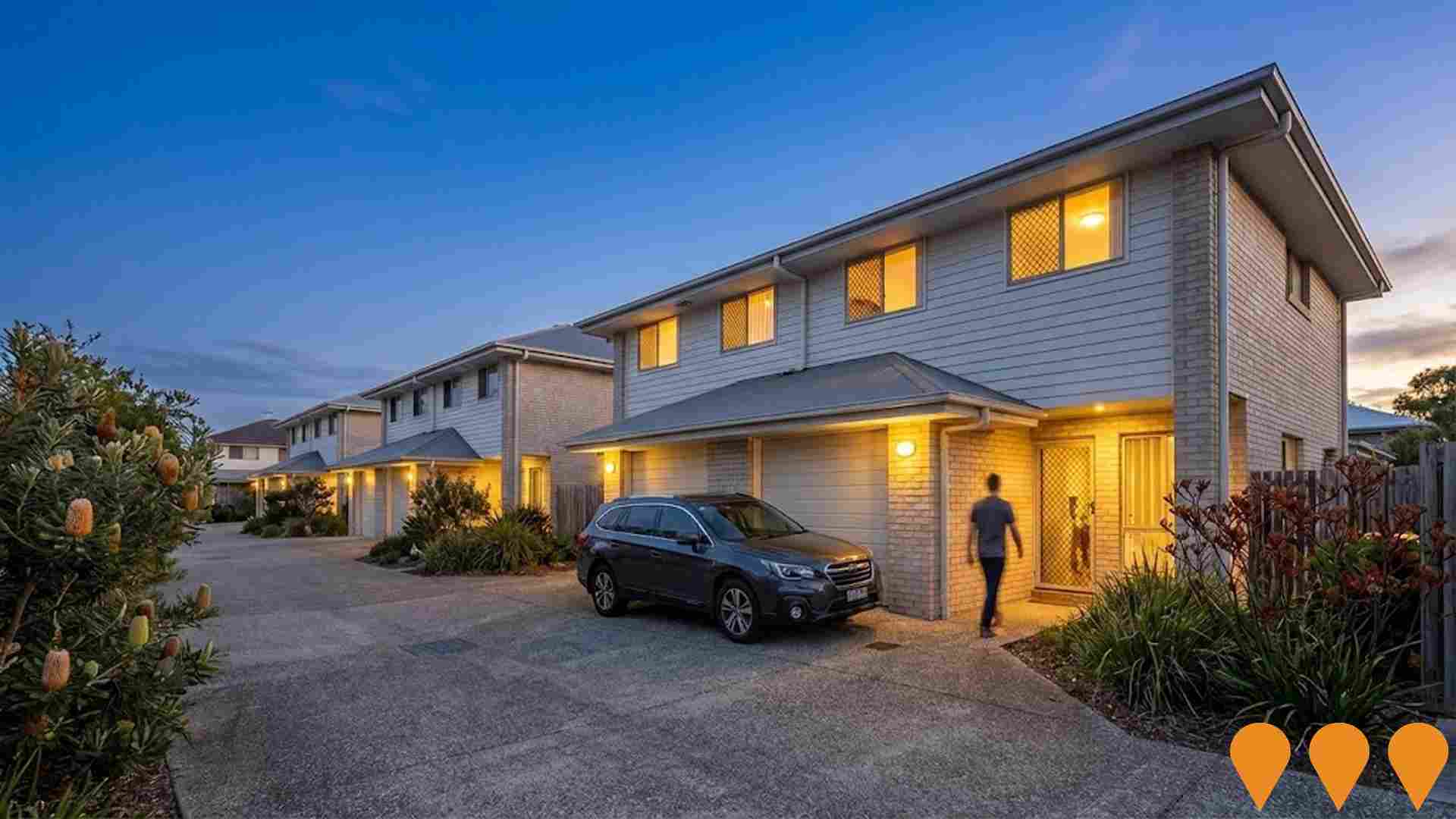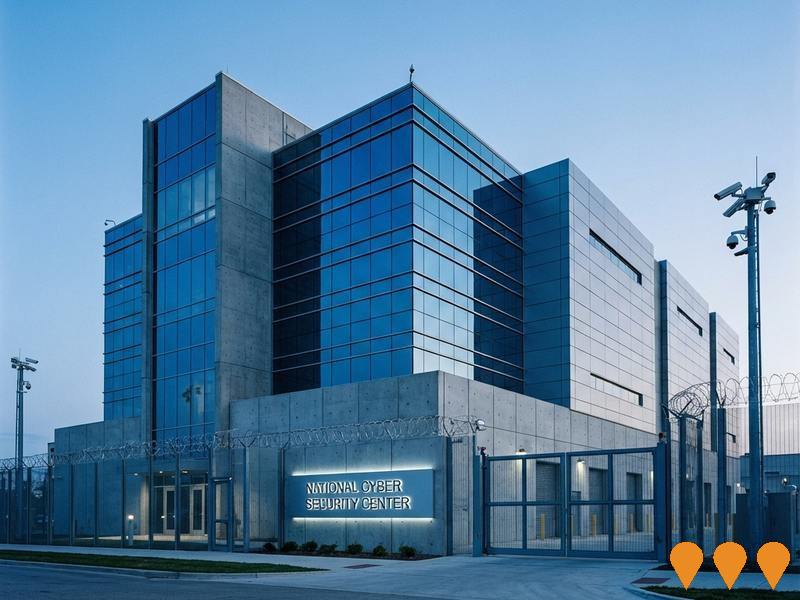Chart Color Schemes
est. as @ -- *
ABS ERP | -- people | --
2021 Census | -- people
Sales Activity
Curious about local property values? Filter the chart to assess the volume and appreciation (including resales) trends and regional comparisons, or scroll to the map below view this information at an individual property level.
Find a Recent Sale
Sales Detail
Population
Doolandella lies within the top 10% of areas nationally in terms of population growth performance according to AreaSearch analysis of short and medium-term trends
Doolandella's population was approximately 10,104 as of August 2025. This figure shows an increase of 1,506 people from the 2021 Census, which recorded a population of 8,598. The change is inferred from the estimated resident population of 9,788 in June 2024 and an additional 336 validated new addresses since the Census date. This results in a density ratio of 2,507 persons per square kilometer, placing Doolandella in the upper quartile relative to national locations assessed by AreaSearch. The area's population growth of 17.5% since the 2021 census exceeded the national average of 8.6%. Natural growth contributed approximately 37.3% of overall population gains during recent periods, with all drivers including overseas migration and interstate migration being positive factors.
AreaSearch adopts ABS/Geoscience Australia projections for each SA2 area released in 2024 using 2022 as the base year. For areas not covered by this data and years post-2032, Queensland State Government's SA2 area projections released in 2023 based on 2021 data are used. These state projections do not provide age category splits, so AreaSearch applies proportional growth weightings in line with the ABS Greater Capital Region projections for each age cohort released in 2023 using 2022 data as the base year. Future population trends indicate a significant increase is forecast for Doolandella, with an expected expansion of 2,737 persons by 2041 based on the latest population numbers, reflecting a total increase of 24.0% over the 17-year period.
Frequently Asked Questions - Population
Development
AreaSearch assessment of residential development activity positions Doolandella among the top 25% of areas assessed nationwide
Doolandella has received around 71 dwelling approvals annually over the past five financial years, totalling 357 homes. As of FY26, 9 approvals have been recorded. On average, 5.1 new residents arrive per year per dwelling constructed between FY21 and FY25.
This outpaces supply, potentially influencing prices and buyer competition, with new dwellings valued at approximately $445,000 on average. Compared to Greater Brisbane, Doolandella has seen 119.0% more construction activity per person recently. However, development activity has slowed in recent periods. Current construction comprises 85.0% detached dwellings and 15.0% townhouses or apartments, maintaining the area's suburban character.
There are approximately 206 people per dwelling approval, indicating a growing market. Population forecasts suggest Doolandella will gain 2,421 residents by 2041. If current development patterns continue, new housing supply should meet demand, offering favourable conditions for buyers and potentially facilitating further population growth.
Frequently Asked Questions - Development
Infrastructure
Doolandella has moderate levels of nearby infrastructure activity, ranking in the top 50% nationally
Changes to local infrastructure significantly impact an area's performance. AreaSearch identified seven projects likely affecting the region. Notable ones are Pallara Development Project at 78-88 Vied Road, 40-60 Woodvale Crescent State Facilitated Development, Imperial On Panda, and Oxley Wedge Industrial Precinct. The following list details those most relevant.
Professional plan users can use the search below to filter and access additional projects.
INFRASTRUCTURE SEARCH
 Denotes AI-based impression for illustrative purposes only, not to be taken as definitive under any circumstances. Please follow links and conduct other investigations from the project's source for actual imagery. Developers and project owners wishing us to use original imagery please Contact Us and we will do so.
Denotes AI-based impression for illustrative purposes only, not to be taken as definitive under any circumstances. Please follow links and conduct other investigations from the project's source for actual imagery. Developers and project owners wishing us to use original imagery please Contact Us and we will do so.
Frequently Asked Questions - Infrastructure
Logan Plan
The Logan Plan is Logan City Council's new city-wide planning scheme replacing the existing 2015 scheme. It will guide future growth, housing diversity, employment, and infrastructure across the entire City of Logan to 2046. The draft Logan Plan completed State Interest Review in June 2025 and underwent public consultation from 1 September to 31 October 2025. Council is now reviewing submissions with adoption and commencement targeted for mid-2026.
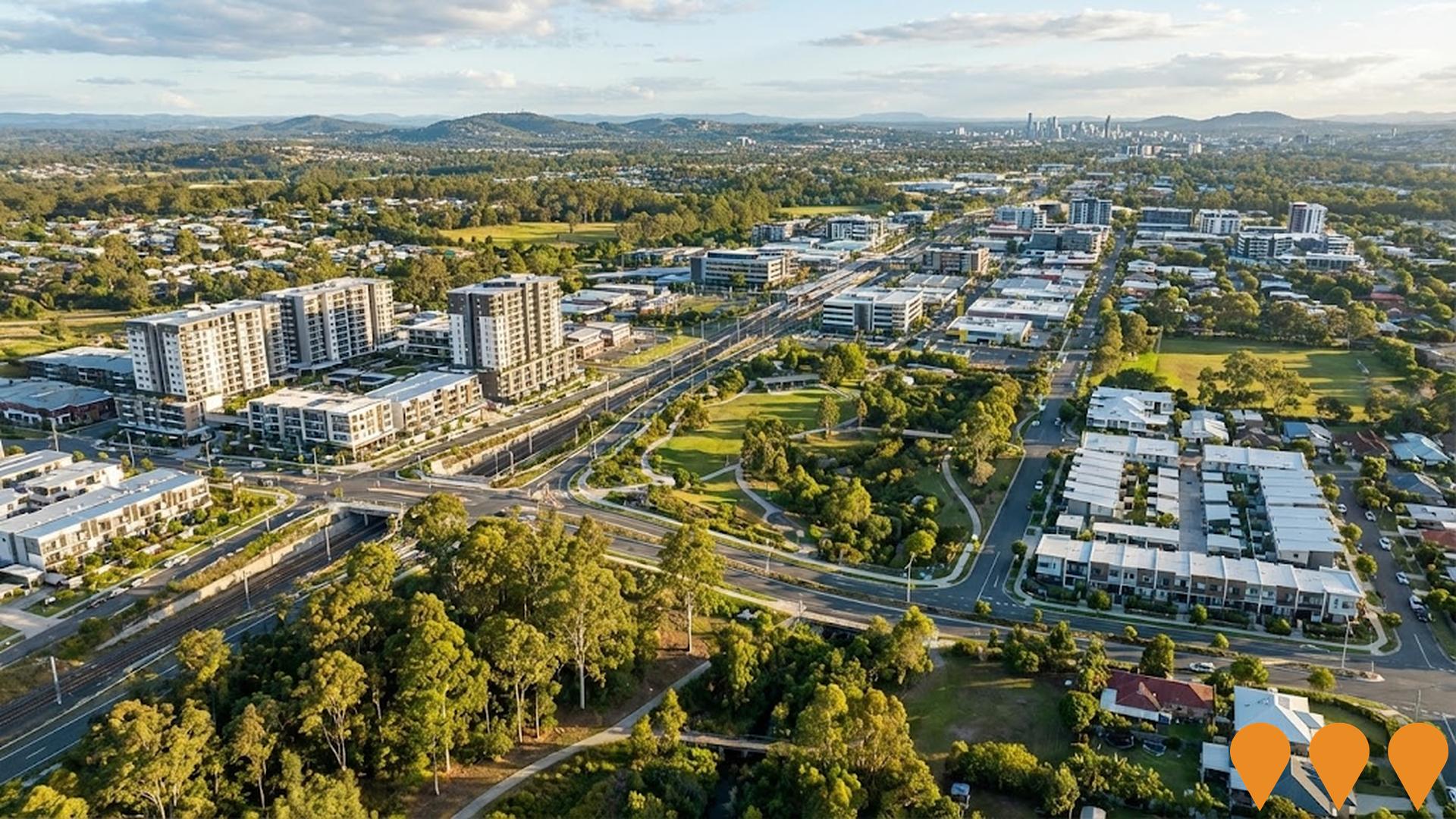
Logan West Upgrade
Major upgrade to the western section of the Logan Motorway in partnership with Transurban Queensland and the Queensland Government. Adds one additional lane in each direction along approximately 10-13km between the Centenary Highway and Mt Lindesay Highway, plus an extra westbound lane between Boundary Road and Formation Street. Includes upgrading the Formation Street interchange, installing smart motorway technologies, and increasing vehicle height capacity for over-dimensional vehicles. Expected to reduce peak travel times by up to 20 minutes, improve freight productivity on a route handling 210,000 daily trips, enhance safety, and support preparations for the 2032 Brisbane Olympics. Community consultation completed in 2024; construction targeted for completion before 2032.
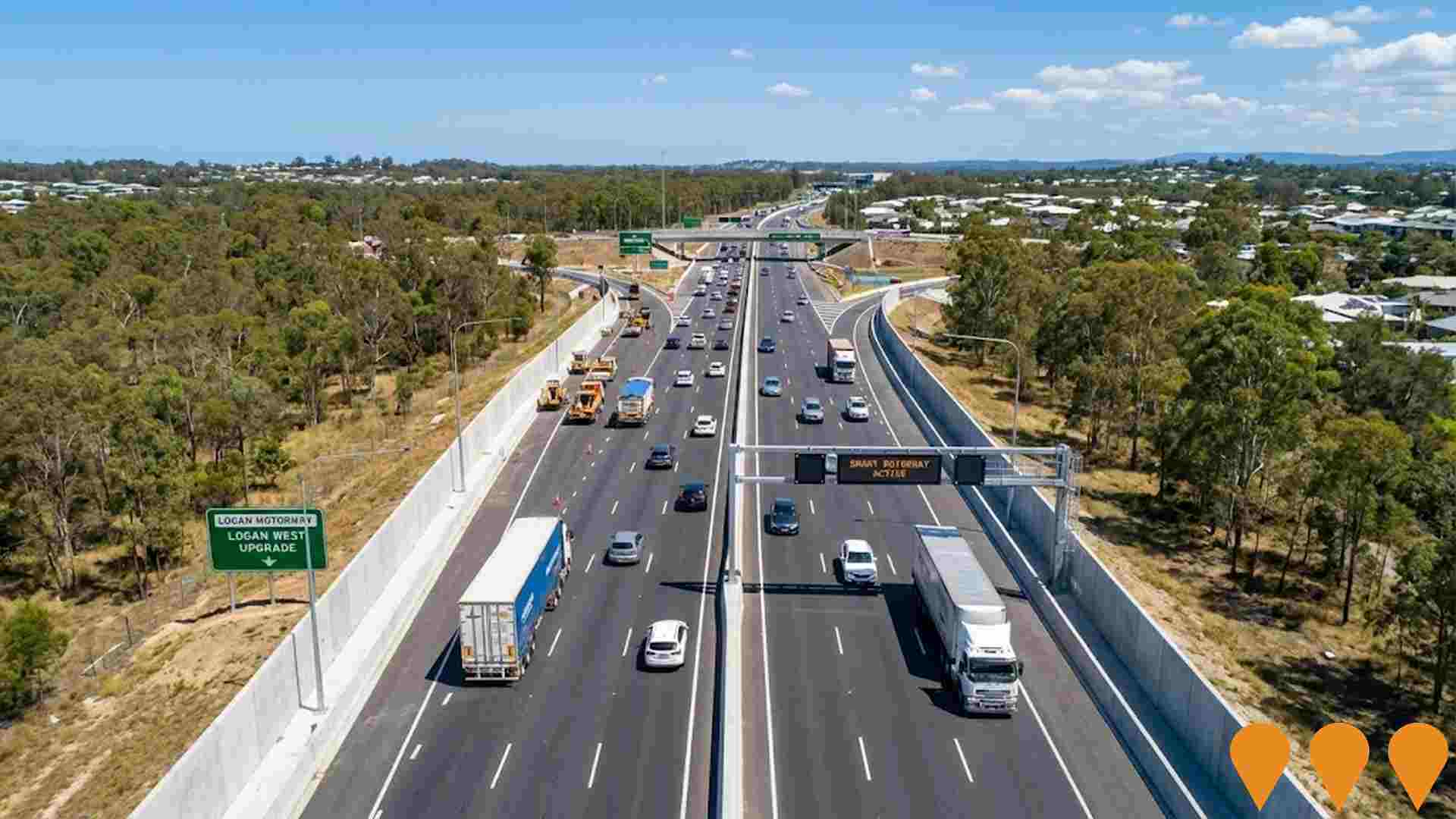
Richlands Railway Station
Completed modern railway station serving the Springfield line of Queensland Rail Citytrain network. Features 650 car parking spaces in multi-storey car park, bus interchange with four bus stops, and state-of-the-art facilities serving as major transport hub for southwest Brisbane corridor. Provides important public transport connectivity for the Richlands and surrounding communities including Inala. Opened January 17, 2011 as the terminus station with full line services to Springfield commencing December 2013.
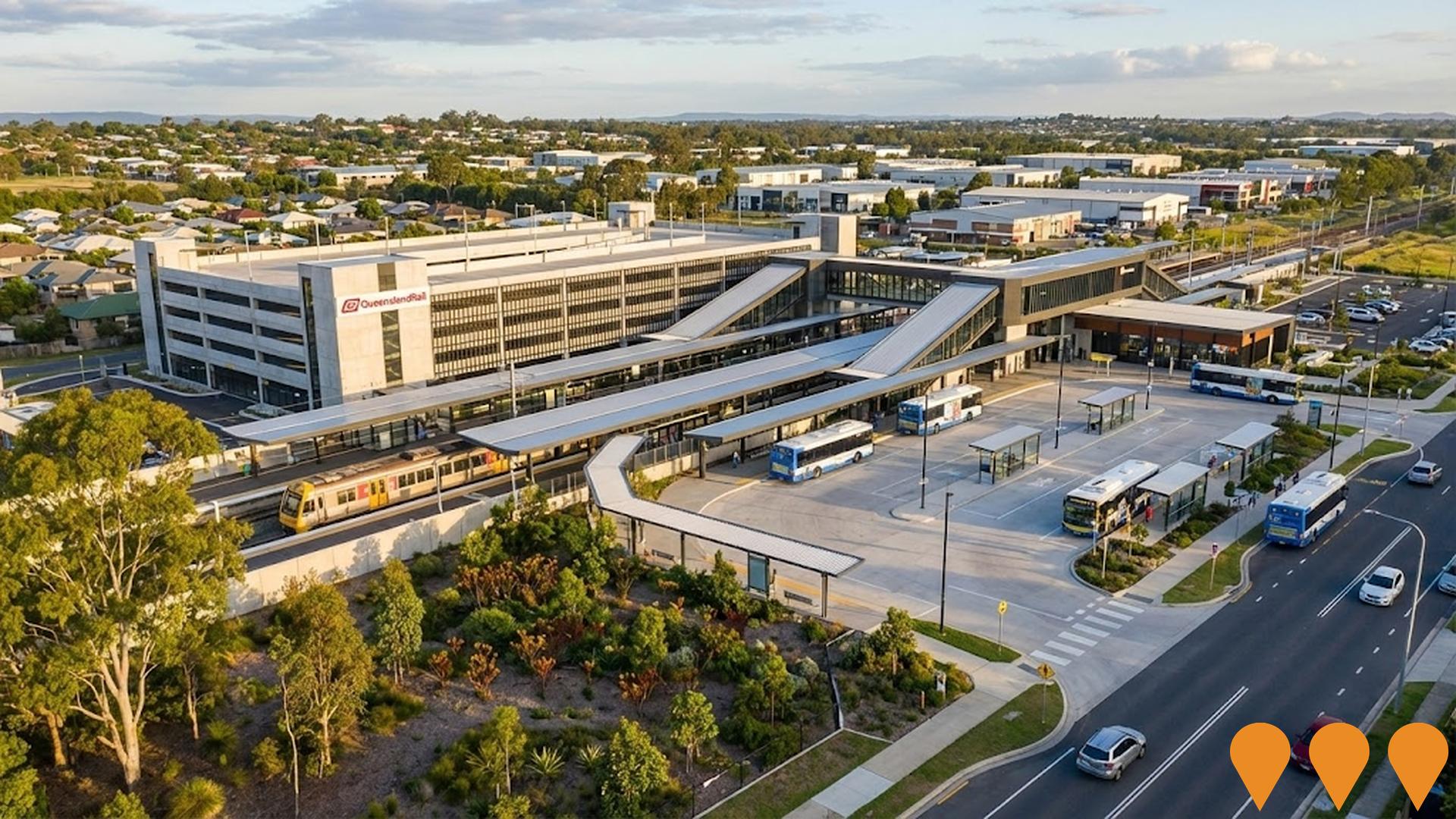
Oxley Wedge Industrial Precinct
Large-scale industrial precinct development within the Oxley Wedge area, delivering new warehousing and freight facilities adjacent to the Acacia Ridge intermodal terminal, with development now underway by primary developers.

Acacia Ridge Industrial Estate Expansion - Warehouse & Logistics Facilities
Major expansion of one of Australia's largest industrial estates with new premium warehouse and logistics facilities, potentially relating to the Acacia Link Industrial Estate developments in the area. The Goodman Group has multiple properties in the Acacia Ridge area which are completed and available for lease or are part of their overall development pipeline. The original project is likely completed or superseded by several ongoing developments in the Acacia Ridge area.
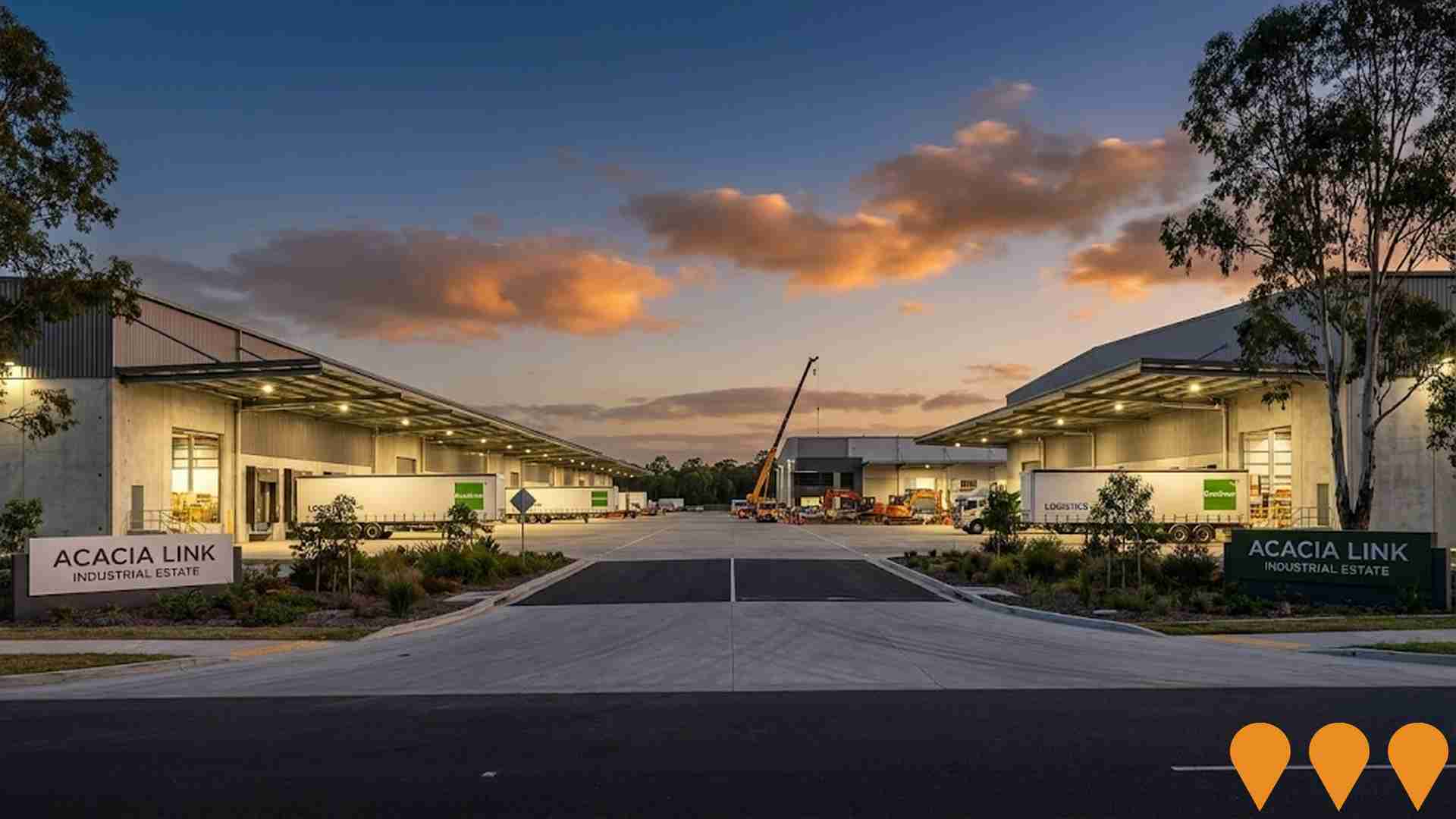
Inala Walking Network Plan
Brisbane City Council is preparing a Walking Network Plan for the Inala precinct focused on the area around Inala Plaza and the bus station. The plan maps primary and secondary walking routes within roughly a 2 km catchment to guide future investment in comfortable, safe and accessible walking links and street upgrades. Community consultation closed in November 2024 and Council is reviewing feedback to finalise the plan.

40-60 Woodvale Crescent State Facilitated Development
State Facilitated Development project for affordable residential housing in Forest Lake. Minimum 15% affordable housing allocation with density of 25+ dwellings per hectare. Fast-tracked development to address growing housing demand in Brisbane's outer suburbs. Located near major transport connections and local amenities including Logan Motorway and Centenary Highway.

Proposed Coles Shopping Centre - Progress Road
Proposed single-storey shopping complex featuring Coles supermarket and 18 additional retail tenancies on 28,885 sqm site, with 265 car parking spaces.
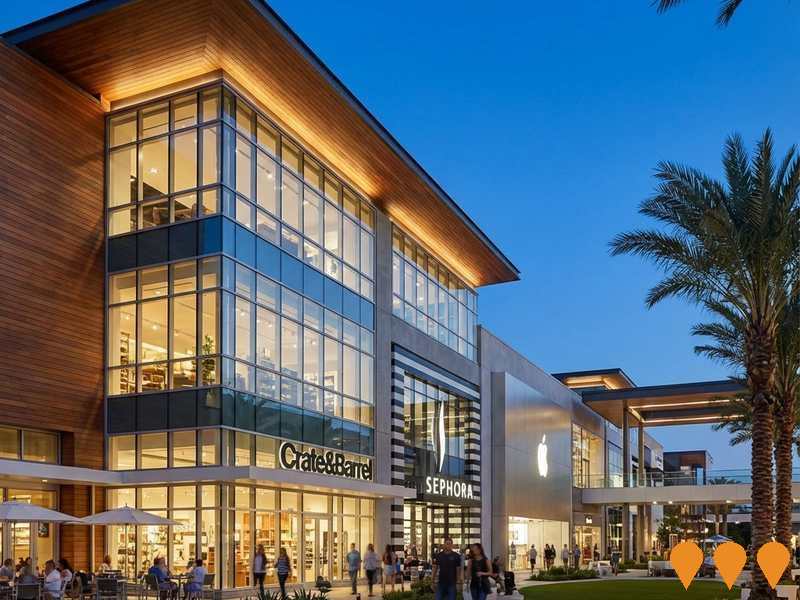
Employment
The employment environment in Doolandella shows above-average strength when compared nationally
Doolandella has an educated workforce with diverse sector representation and a low unemployment rate of 3.5%. In June 2025, 5,214 residents were employed, with an unemployment rate of 3.5%, which is 0.6% below Greater Brisbane's rate of 4.1%.
Workforce participation was 68.8%, similar to Greater Brisbane's 64.5%. The dominant employment sectors were health care & social assistance, manufacturing, and retail trade. Manufacturing had a strong presence with an employment share 1.7 times the regional level, while construction had limited presence at 5.5% compared to the regional 9.0%. Over the year to June 2025, Doolandella's employment increased by 0.1%, labour force grew by 0.2%, and unemployment rose by 0.2 percentage points.
This contrasts with Greater Brisbane where employment rose by 4.4%, labour force grew by 4.0%, and unemployment fell by 0.4 percentage points. Jobs and Skills Australia's national employment forecasts from May 2025 project national employment growth of 6.6% over five years and 13.7% over ten years, with varying rates across sectors. Applying these projections to Doolandella's employment mix suggests local growth of approximately 6.2% over five years and 13.4% over ten years.
Frequently Asked Questions - Employment
Income
Income levels sit below national averages according to AreaSearch assessment
AreaSearch's latest postcode level ATO data for financial year 2022 shows Doolandella's median income among taxpayers is $46,533. The average income in the area was $51,769 during this period. This is below the national average. In Greater Brisbane, the median income was $55,645 and the average was $70,520. Based on Wage Price Index growth of 13.99% since financial year 2022, current estimates for Doolandella's median income would be approximately $53,043 as of September 2025. The average income estimate for the same period is $59,011. Census data indicates that incomes in Doolandella cluster around the 53rd percentile nationally. Income analysis reveals that the largest segment comprises 42.5% earning between $1,500 and $2,999 weekly, with 4,294 residents falling into this category. This aligns with the surrounding region where this cohort represents 33.3%. High housing costs consume 17.6% of income in Doolandella. However, strong earnings place disposable income at the 54th percentile nationally. The area's SEIFA income ranking places it in the 4th decile.
Frequently Asked Questions - Income
Housing
Doolandella is characterized by a predominantly suburban housing profile, with ownership patterns similar to the broader region
Doolandella's dwelling structures, as per the latest Census, consisted of 77.5% houses and 22.6% other dwellings (semi-detached, apartments, 'other' dwellings), compared to Brisbane metro's 80.2% houses and 19.8% other dwellings. Home ownership in Doolandella was at 15.3%, with mortgaged dwellings at 42.4% and rented ones at 42.3%. The median monthly mortgage repayment was $1,733, higher than Brisbane metro's average of $1,630. The median weekly rent in Doolandella was $365, compared to Brisbane metro's $355. Nationally, Doolandella's mortgage repayments were lower than the Australian average of $1,863, and rents were less than the national figure of $375.
Frequently Asked Questions - Housing
Household Composition
Doolandella features high concentrations of family households, with a higher-than-average median household size
Family households constitute 80.9% of all households, including 44.5% couples with children, 21.1% couples without children, and 13.6% single parent families. Non-family households account for the remaining 19.1%, with lone person households at 15.4% and group households comprising 3.5%. The median household size is 3.1 people, larger than the Greater Brisbane average of 2.8.
Frequently Asked Questions - Households
Local Schools & Education
Educational outcomes in Doolandella fall within the lower quartile nationally, indicating opportunities for improvement in qualification attainment
The area's educational profile is notable regionally with university qualification rates at 27.0% among residents aged 15+, surpassing the SA4 region average of 18.8%. Bachelor degrees are most common at 18.4%, followed by postgraduate qualifications (6.8%) and graduate diplomas (1.8%). Vocational credentials are prevalent, with 31.9% of residents aged 15+ holding such qualifications - advanced diplomas at 11.1% and certificates at 20.8%.
Educational participation is high, with 34.1% of residents currently enrolled in formal education. This includes 11.6% in primary, 8.2% in secondary, and 6.5% in tertiary education. Serviceton South State School serves the local community within Doolandella, with an enrollment of 462 students as of the reporting date. The area has varied educational conditions; it has one school focused exclusively on primary education, with secondary options available in surrounding areas. Local school capacity is limited at 4.6 places per 100 residents compared to the regional average of 13.3, leading many families to travel for schooling.
Frequently Asked Questions - Education
Schools Detail
Nearby Services & Amenities
Transport
Transport servicing is low compared to other areas nationally based on assessment of service frequency, route connectivity and accessibility
Doolandella has 11 active public transport stops operating within its boundaries. All these stops are serviced by buses, with four individual routes providing a total of 774 weekly passenger trips. The accessibility to public transport is rated as good, with residents typically located 274 meters from the nearest stop.
Across all routes, service frequency averages 110 trips per day, which equates to approximately 70 weekly trips per individual stop.
Frequently Asked Questions - Transport
Transport Stops Detail
Health
Doolandella's residents boast exceedingly positive health performance metrics with both young and old age cohorts seeing low prevalence of common health conditions
Health outcomes data shows notable results across Doolandella, with both younger and older age groups experiencing low prevalence of common health conditions. The rate of private health cover stands at approximately 46%, covering about 4,668 people in total, compared to Greater Brisbane's 49.5%. Nationally, the average is 55.3%.
Asthma and mental health issues are the most prevalent medical conditions, affecting 6.8% and 6.5% of residents respectively. A total of 78.8% report no medical ailments, compared to Greater Brisbane's 72.1%. As of October 2021, Doolandella has 8.6% of its population aged 65 and over, comprising around 873 people, which is lower than Greater Brisbane's 13.6%. Despite this, health outcomes among seniors require particular attention.
Frequently Asked Questions - Health
Cultural Diversity
Doolandella is among the most culturally diverse areas in the country based on AreaSearch assessment of a range of language and cultural background related metrics
Doolandella has a high level of cultural diversity, with 51.2% of its population speaking a language other than English at home and 49.2% born overseas. Christianity is the main religion in Doolandella, comprising 40.9% of people. However, Buddhism is overrepresented compared to Greater Brisbane, making up 7.9% of Doolandella's population versus 8.7%.
The top three ancestry groups are Other at 22.7%, English at 16.3%, and Australian at 15.3%. Notably, Vietnamese (11.2%), Samoan (3.4%), and Maori (1.8%) ethnicities are overrepresented in Doolandella compared to regional averages.
Frequently Asked Questions - Diversity
Age
Doolandella hosts a very young demographic, ranking in the bottom 10% of areas nationwide
At 32 years, Doolandella's median age is notably under the Greater Brisbane average of 36 and significantly lower than the Australian median of 38. Relative to Greater Brisbane, Doolandella has a higher concentration of 0-4 residents (8.7%) but fewer 65-74 year-olds (5.3%). In the period from 2021 to present, the 75 to 84 age group has grown from 1.6% to 2.8% of the population. Conversely, the 25 to 34 cohort has declined from 18.5% to 17.4%. Demographic modeling suggests Doolandella's age profile will evolve significantly by 2041. The 45 to 54 age cohort is projected to grow steadily, expanding by 530 people (43%) from 1,223 to 1,754. Conversely, the 0 to 4 cohort is projected to decline by 0 people.
